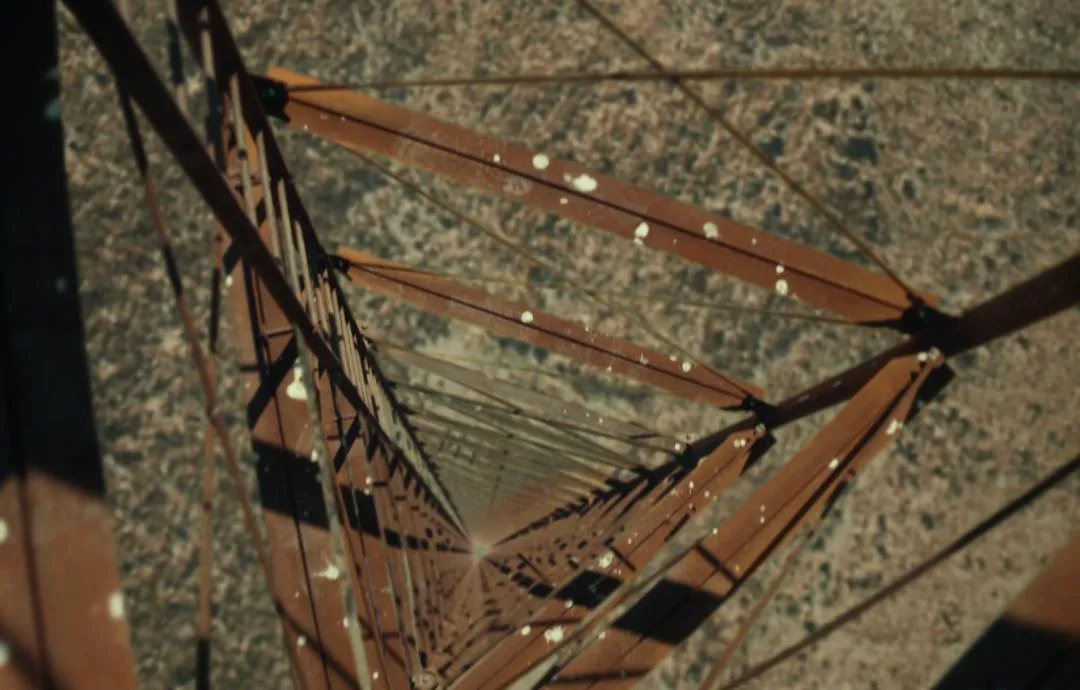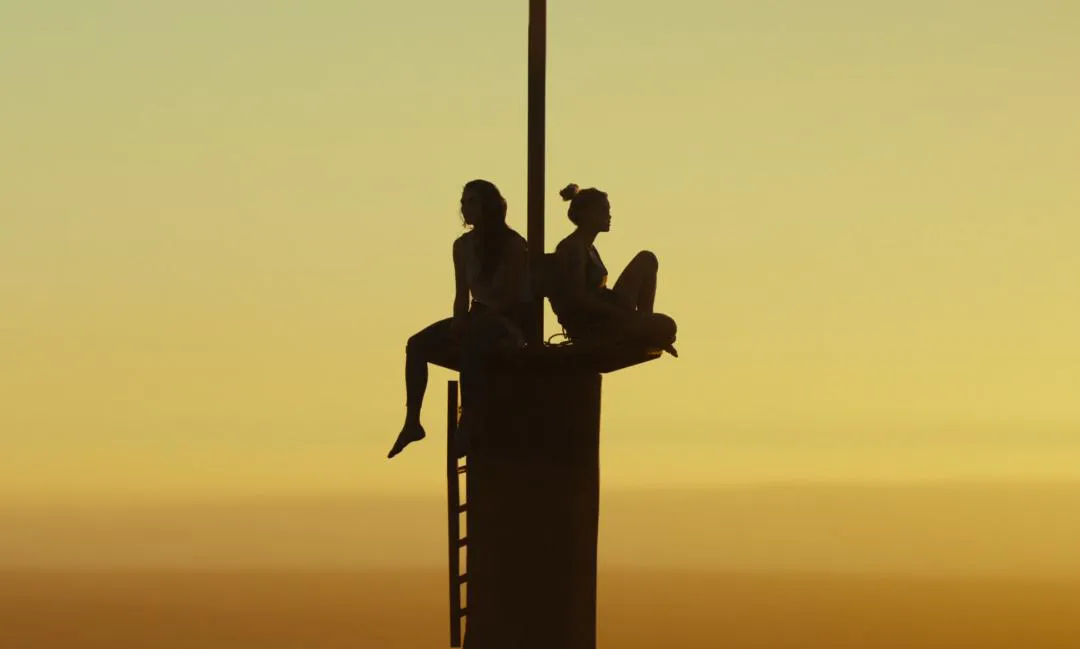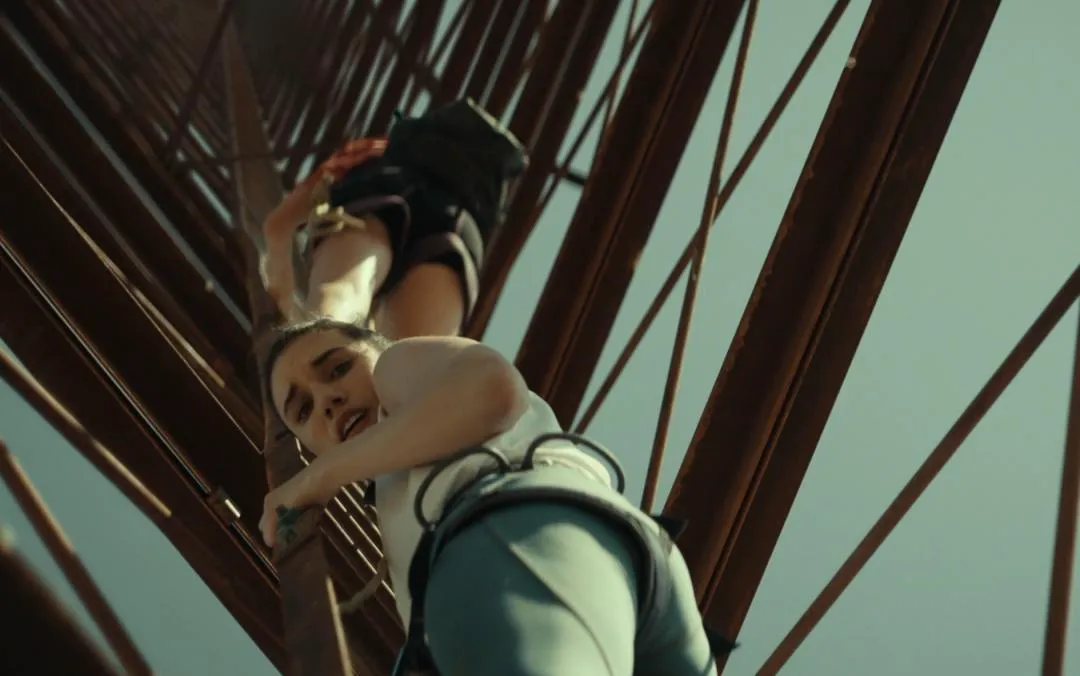“Fall”: A Thrilling Tale of Survival Against the Odds
“Fall” presents a straightforward narrative: two social media personalities find themselves trapped atop a 600-meter-high tower, fighting for their lives. It’s a survival story that plays on primal fears and adrenaline.
The film is notably specialized. Aspects like acting take a backseat, with the performances adequate but not particularly demanding. The focus is clearly elsewhere.

The Art of Suspense: Highlighting the Film’s Strengths
However, where the film excels is worth exploring in detail.
The Perilous World of “Fall”
The central theme is “danger.” From the opening scene depicting the protagonist’s husband’s fatal fall to the near-miss car accident as the two women leave their motel, the film relentlessly showcases the omnipresent threats surrounding them. Even the vultures circling overhead add to the sense of impending doom.

The filmmakers demonstrate a keen understanding of how to build tension. During the climb, the camera meticulously captures every loose bolt and precarious step, making the audience feel every sway and creak of the tower.
Visual Storytelling and Pacing
The combination of skillful cinematography and sharp editing culminates in a thrilling first half, particularly the ascent and the subsequent collapse of the ladder. The survival struggle that follows, while tense, doesn’t quite reach the same heights until the drone-charging twist injects a fresh surge of energy.

Plot Twists and Emotional Depth
While the plot twists might not be strictly essential, they serve a purpose. Without the compelling performances and narrative depth of a film like “127 Hours,” the latter half could have felt monotonous. The revelation of the deceased husband’s infidelity, similarly, adds a layer of complexity to the narrative, preventing it from becoming too predictable.

Avoiding Preachiness: A Smart Move
The film’s strength lies in its avoidance of heavy-handed moralizing. This ensures that even if the film doesn’t fully resonate with every viewer, it’s unlikely to be actively disliked. The decision to tie the ending to themes of family is a sensible and satisfying choice. The filmmakers demonstrate their intelligence by knowing what to emphasize and what to downplay.
The Nature of Risk: Exploration vs. Performance
Finally, let’s consider the characters’ motivations. The human drive to explore and take risks is fundamental to progress, even when those risks seem unwarranted. The purpose behind the adventure dictates the nature of the actions taken. Exploration-driven adventures involve careful risk assessment and mitigation to achieve the goal of knowledge.

In contrast, adventures driven by “performance” often prioritize maximizing danger to capture attention. This is the fundamental difference between, say, Antarctic researchers and social media daredevils.